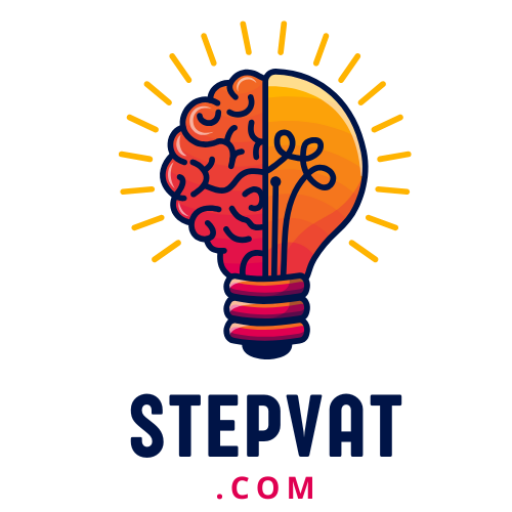Anúncios
financial trends guide 2025 starts by showing you how to turn market signals and tech shifts into clear actions for your team.
You’ll see how FP&A moved from number-crunching to a strategic enabler. Workday found 99% of leaders spot benefits from AI, yet many teams still lack the skills to use it fully. Deloitte notes cloud ERPs now drive business value, not just cut costs.
This section gives practical insights you can apply now. We focus on interest-rate moves, prices and budgets, AI adoption, and cloud platforms that boost measurable value. You get short, clear examples that link planning, data, and analytics to everyday decisions.
Expect plain language and quick wins. We point out what’s new versus what continues from 2024, so you can prioritize with confidence and help your financial services teams partner with the business to unlock results.
Key Takeaways
- Turn market signals into practical steps for your teams.
- Move from static reports to real-time insights using data and analytics.
- Leverage cloud platforms and AI to create measurable business value.
- Use planning as the backbone to link budgets, costs, and capacity.
- Focus on skills and collaboration—CFO-CIO alignment speeds transformation.
Introduction: Why 2025 Is a Pivotal Year for Your Finance Strategy
You face a moment when speed and clarity in decision-making matter more than ever. AI is changing how FP&A works, moving teams from periodic reports to real-time support for decisions.
In time-sensitive situations, you need analytics that cut the delay from question to answer. Deloitte reports that off-cycle reporting and instant insights are on the rise, and cloud ERPs now deliver measurable business value.
This section shows practical steps you can take today. You’ll see how to use data, AI tools, and cloud systems to translate market signals into actions that drive growth and limit downside risk.
The shift from reporting to real-time decisions
AI and better analytics let you spot issues sooner and test scenarios faster. Yet leaders report skill gaps—so we focus on simple, repeatable steps that your team can adopt without long projects.
How this guide helps you turn trends into actions
Expect clear, usable insights you can add to weekly reviews, board updates, and planning rituals. We sequence steps to capture quick wins while building long-term capabilities in your finance team.
Read on for concise actions that fit your team’s way of working and make each decision count.
Reading the Macro Signals: Rates, Prices, and Market Sentiment
Watch rates and prices closely—shifts show where risk and opportunity sit. Short moves in interest rates change borrowing costs and demand fast. You can use those moves to shape your planning.
Interest rates and mortgage rates: What to watch and why it matters
Track interest rates and mortgage rates because they affect discount rates and sentiment investors watch. Set three rate paths—base, higher-for-longer, and easing. Then link triggers to each path so your plan switches in real time.
Inflation, costs, and budgets: Guardrails for your planning
Translate prices and wage assumptions into budget lines. Use data and analytics to auto-alert on variance for debt expense, lease liabilities, and interest income.
- Test hurdle rates for new projects in each scenario.
- Tie market sentiment to pipeline quality and hiring pace.
- Assign owners on a simple risk heat map for credit spreads and input costs.
| Signal | Action | Trigger | Owner |
|---|---|---|---|
| Rising interest rates | Re-price loans; stress cash timing | 30bps move in 90 days | FP&A lead |
| Commodity price rise | Adjust budgets; update margins | 5% month-over-month spike | Ops finance |
| Negative market sentiment | Slow hiring; protect cash | Pipeline drop >15% | Revenue head |
Finish each forecast with a one-page summary for investors: what changed, why it matters, and the next steps.
AI Moves FP&A from Reactive to Strategic
AI is turning routine reporting into proactive advice that steers your next move. This shift helps your team trade one-off reports for clear options and trade-offs.
From number crunching to scenario modeling and risk sensing
Use analytics and simple scenario modeling to show choices, not just results. Start with narrow pilots: explain forecast variance, test revenue drivers, and sense pipeline risk.
Generative AI and NLP: Self-serve insights for non-finance teams
Give business users tools that answer plain-English queries. That lowers friction so teams act without a waiting list for decks.
Trust and adoption: Communicating the “why” behind AI at work
Be explicit about data sources, limits, and review steps. Train core capabilities—prompt design, modeling basics, and control checks—so employees know how to use solutions safely.
“99% of leaders see AI benefits, but many report skill gaps.” — Workday AI IQ survey
- Pair data checks with AI outputs and keep a human-in-the-loop for high-stakes calls.
- Publish short content that explains model scope and gives reusable examples.
- Track decisions influenced by AI and note the business value to build momentum with market teams.
| Use case | Benefit | Quick win |
|---|---|---|
| Variance explanation | Faster root cause | Auto-summary in minutes |
| Pipeline risk sensing | Earlier alerts | Weekly risk flags |
| Self-serve insights | Less analyst backlog | Chat queries for sales |
Data Quality as a Competitive Edge
Clean, trusted data is the lever that turns insight into action for your team. You need clear rules and a shared ownership model to avoid repeated fixes. Workday shows teams with tight CFO‑CIO alignment move faster on digital finance work.

CFO-CIO alignment: the backbone of reliable analytics
Make alignment a simple, measurable agreement. Define who owns definitions, refresh cycles, and access. Measure impact by tracking fewer manual fixes and shorter close cycles.
Governance basics: standardize, clean, and harmonize your data
Start with a short sequence of steps. Inventory sources. Clean priority tables. Harmonize master data. Then automate feeds into planning and reporting.
- Set management rules for definitions, owners, and refresh schedules so everyone uses one version of the truth.
- Use tools to standardize charts of accounts, dimensions, and hierarchies across services and the market.
- Cover credit early—errors in collections compound into cash surprises and bad‑debt risk.
- Add controls for rates and FX tables to avoid model failures when volatility spikes.
- Build capabilities with a small center of excellence to document patterns and accelerate reuse.
Publish short content that maps how data flows from systems to dashboards, and revisit the roadmap each year to reflect new sources, acquisitions, and how you sell. Quantify the value by tracking fewer restatements, faster cycles, and clearer insights that lift margin and cash.
Integrated Planning and Cross-Functional Partnering
A single planning model makes trade-offs visible and speeds better decisions. Build one plan that ties revenue drivers, capacity, and costs to the budget so leaders see trade-offs in one place.
Linking revenue, costs, and capacity in one plan
Start small. Map the few drivers that matter: sales pipeline, headcount, and unit cost. Then link them into one model that updates together.
Define three decision levers you review each month. Keep scenarios light: base, upside, and guardrail. Add clear triggers to switch spend or hiring.
Embedding FP&A in marketing, sales, product, and operations
Place analysts inside marketing and sales to align demand plans with pipeline health. Partner with product and ops to map throughput and service levels to capacity.
Use simple rules so analytics and data support routine decisions like hiring pace and program spend. Choose tools that may also push alerts when thresholds trip.
- Publish short content that explains plan logic so every team trusts and uses it.
- Run a monthly decisions forum and share two insights per function.
- Close the loop: measure outcomes versus plan and feed lessons into next month’s cycle.
Start with financial planning basics, then layer non-financial KPIs that drive value. This makes planning part of how the business operates, not a separate report.
Cloud Platforms Become the Finance Operating System
Cloud platforms are becoming the central hub that joins your data, tools, and teams. When you move core workflows to the cloud, planning and reporting run continuously and update automatically.

Continuous planning, automated reporting, and dashboards
Use cloud solutions to link CRM, HR, and operations so analytics refresh without manual work. Automated reporting frees your team to write clear narratives and focus on impact, not slide formatting.
ERP in the cloud: From back-office cost to business value
Treat the ERP as a platform that drives pricing, supply, and services decisions. Deloitte and Workday show cloud ERPs shift value to the front office by improving speed, collaboration, and visibility.
Scenario modeling at scale: Faster cycles, better decisions
Scale modeling so you can run many cases at once and feed results into weekly reviews. Include central rates and FX tables to cut timing gaps when macro moves hit markets.
- Connect data across systems so tools deliver live analytics and update plans automatically.
- Automate dashboards and reporting packages to measure uptime, refresh times, and cycle improvements.
- Pilot a cross-functional use case—pricing or inventory optimization—and track dollar impact on margin and cash.
Workforce Upskilling and New Operating Models
Build a team that blends accounting know-how with coding and product instincts. You need people who can read a P&L and also automate a report. This mix lets you move faster and deliver clearer insights.
Blending finance, data, and engineering skills
Define a clear career path that shows employees how they grow. Tie roles to skills in data, analytics, and basic engineering.
Use a simple rubric by level and years. Link promotions to project impact, not just tenure. Plan rotations with product, sales, and operations so employees learn how value is made in the market.
Change management that sticks: Practical steps and milestones
Start with three concrete steps you can run this quarter.
- Train on priority use cases and tools.
- Coach on prompts, controls, and model checks.
- Host office hours and quick help sessions.
Celebrate wins and remove friction in day-to-day tools. Publish short content that clarifies roles and handoffs so each part of your team knows how they help move metrics.
Give managers a lightweight checklist for feedback, training, and adoption goals. Share insights from pilots and how they may also cut cycle time and improve accuracy.
| Focus | Action | Measure |
|---|---|---|
| Career path | Blend data, analytics, and engineering tasks | Retention of key employees (%) |
| Capabilities | Storytelling with numbers; automation basics | Time saved per recurring report (hours) |
| Change management | Milestones, office hours, short content | Adoption rate of new tools (%) |
Keep the tone positive. Make growth feel safe. Small, steady steps build lasting capability and speed long-term growth.
Risk, Credit, and Liquidity: Managing the Downside While You Grow
Protecting cash and credit is the practical work that keeps growth options open. Build simple rules and daily visibility so you can move quickly when conditions change.
Credit conditions, pricing power, and cash visibility
Start with tightened credit policies and automated collections. Use tools that flag high-risk accounts early. That improves cash visibility week by week.
Link pricing power to contracts and renewal calendars. Guard margins with clear discount rules when demand softens.
- Track rates and interest costs by facility. Test refinance options to lower expense and smooth income swings.
- Build a rolling 13-week cash model that updates daily from banks and AR/AP flows.
- Set investment guardrails: liquidity buffers and minimum coverage ratios to keep optionality.
Run stress scenarios where prices fall, churn rises, and credit losses widen. Define the decisions you will take at each threshold.
“Scenario-based forecasts and cross-functional partnering align decisions with corporate objectives.” — Workday / Deloitte findings
Communicate simply to investors and the board: what changed, what it means for risk and runway, and which levers you will pull.
financial trends guide 2025: Your Action Playbook
Make the next 90 days about fixing the basics so your team can move faster on strategy.
Start small, move fast. Focus on clear steps that cut cycle time and build trust in your tools and data.
Near-term steps: Data cleanup, tooling, and pilot use cases
Do three quick moves this quarter:
- Clean priority data tables and harmonize master records.
- Deploy core tools for dashboards and automate one report.
- Launch two pilot analytics use cases that show real insights in days.
Stand up a weekly review that turns insight into same-day decisions.
Mid-term moves: Integrated plans and enterprise dashboards
Roll out integrated financial planning and enterprise dashboards so leaders share one version of the way forward.
Add scenario modeling for demand, prices, and interest rates. Tie clear triggers to hiring and spend.
Long-term strategy: Operating model, talent, and governance
Formalize your operating model, talent pathways, and governance so improvements stick.
- Publish enablement materials and self-service services for users.
- Measure outcomes: hours saved, errors removed, and dollars gained.
- Keep your data and analytics roadmap current and review key trends each quarter.
Conclusion
End with a plan that makes each insight an owned, timed outcome. Keep the focus on the future and the next few years so small wins compound into durable growth.
, Make clear choices about which strategies deliver the most value and measure impact. Train professionals, use AI and cloud services responsibly, and keep management light but steady to protect income and investor confidence.
Share short content that helps every part of the business use the plan. Stay close to the market and your employees, assign owners and deadlines, and revisit what worked so you reset the next steps with confidence.



